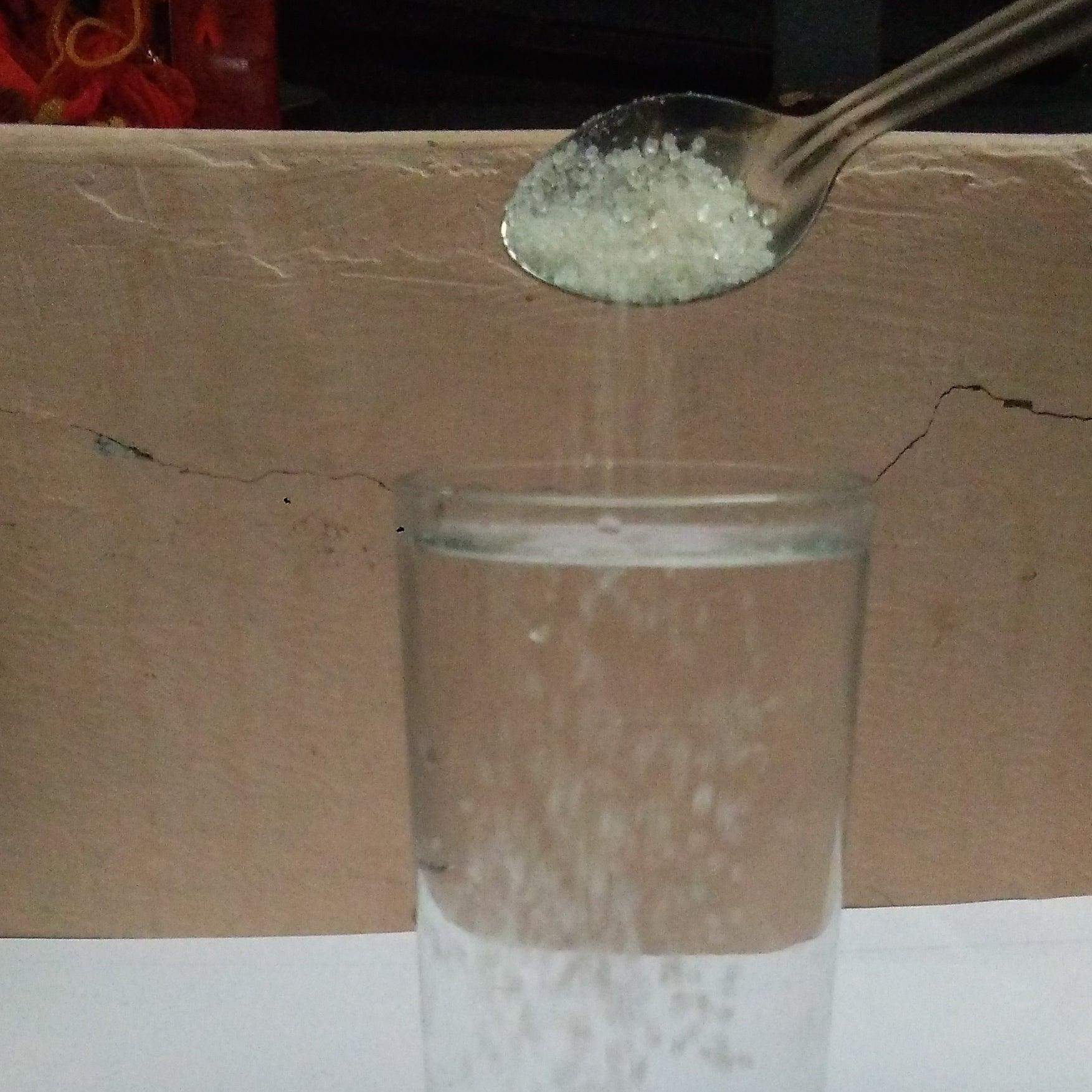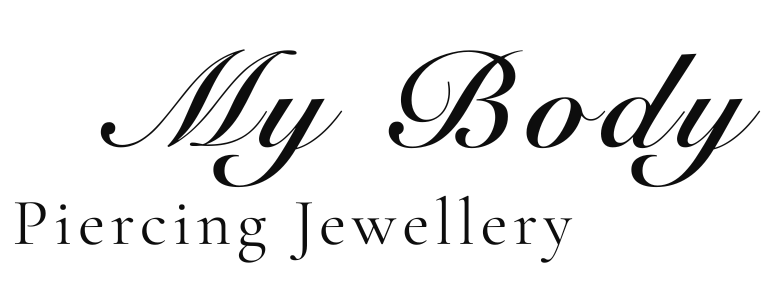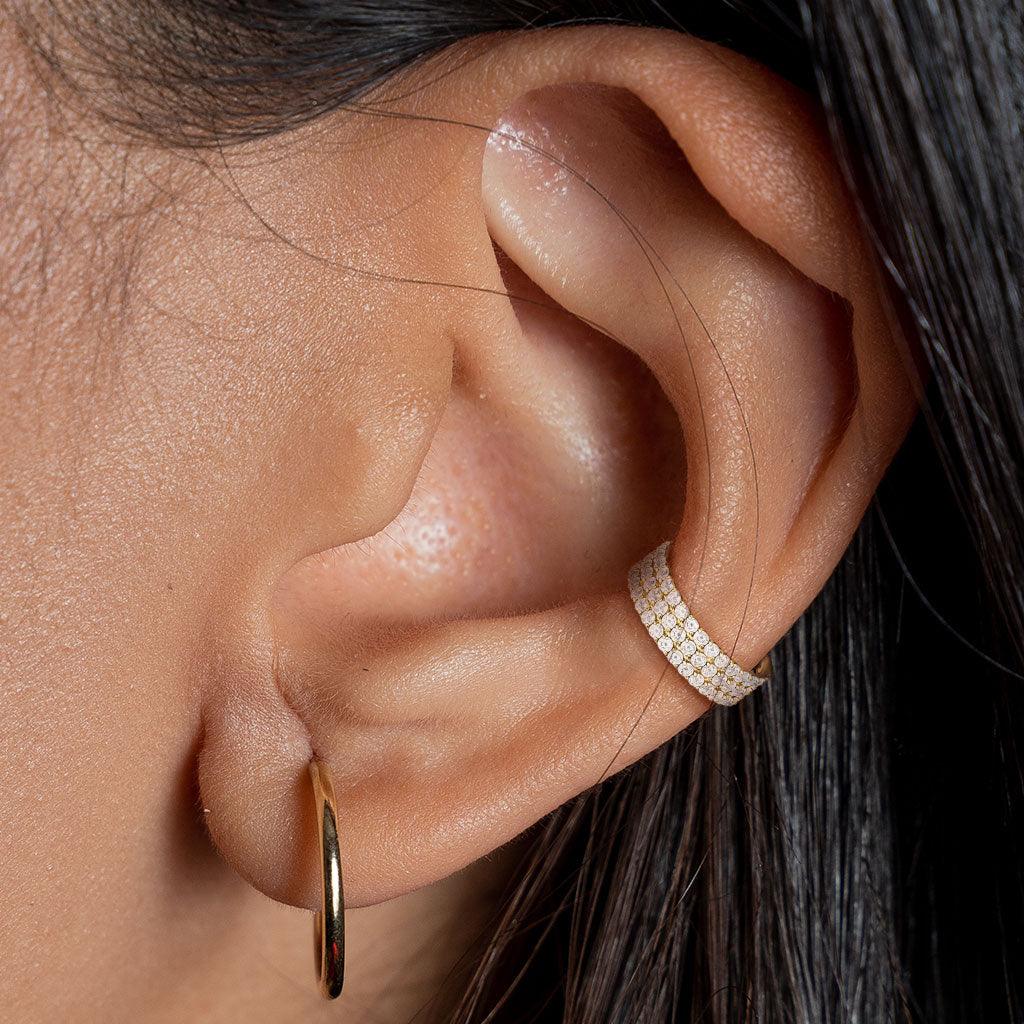
Don't Skip This Step: The Importance of Sterilising Your Piercing
Getting a new piercing can be an exciting experience, but it's important to remember that the journey to achieving your desired look doesn't end there. One crucial step that should never be skipped is sterilising your piercing. Whether it's a simple earlobe piercing or a more complex body piercing, proper sterilisation is crucial for ensuring the health and safety of your new piercing. In this blog post, we'll discuss the importance of sterilising your piercing and how to do it properly. Don't skip this step – read on to find out why!
Understanding Piercing Sterilisation: Why it's Crucial for Your Health
Getting a new piercing is an exciting way to express yourself and enhance your personal style. However, it's important to remember that the journey to achieving your desired look doesn't end with the piercing itself. Proper sterilisation is a crucial step that should never be skipped, as it is essential for ensuring the health and safety of your new piercing.
When you get a piercing, you are creating an open wound in your skin. This makes you vulnerable to infections, which can lead to serious complications if not properly treated. Sterilising your piercing helps to eliminate bacteria and reduce the risk of infection. It is an essential part of the healing process.
By sterilising your piercing, you are creating an environment that is clean and free from harmful bacteria. This allows your body to focus on healing and reduces the chances of developing complications such as inflammation, excessive swelling, or even an abscess.
It's crucial to ensure that the tools used during the piercing process are properly sterilised to minimise risks.
Step-by-step Guide on How to Properly Sterilise Your Piercing at Home
Now that you understand the importance of sterilising your piercing, let's dive into a step-by-step guide on how to properly sterilise your piercing at home. Remember, maintaining a clean and bacteria-free environment is key to a successful healing process.
1. Wash your hands: Before touching your piercing, always start by washing your hands with warm water and antibacterial soap. This will help eliminate any potential bacteria or germs on your hands.
2. Prepare your cleaning solution: Create a saline solution by dissolving 1/4 teaspoon of sea salt in 8 ounces of warm distilled water. Make sure to use a clean cup or bowl to mix the solution.
3. Clean your piercing: Dip a clean cotton ball or sterile gauze pad into the saline solution and gently clean around the piercing. Avoid using cotton buds, as they can leave behind fibres that can irritate your piercing.
4. Rinse thoroughly: After cleaning, rinse the piercing with warm water to remove any excess salt solution.
5. Pat dry: Use a clean, disposable paper towel to gently pat dry the area around the piercing. Avoid using regular towels, as they can harbour bacteria.
6. Avoid touching: Once your piercing is dry, refrain from touching it with dirty hands. Touching the piercing can introduce bacteria and increase the risk of infection.
7. Clean regularly: Repeat this cleaning process twice a day for the first few weeks, and then once a day until your piercing is fully healed.
Remember, proper piercing aftercare is just as important as the initial sterilisation process. Keep an eye out for signs of infection, such as excessive redness, swelling, or discharge. If you notice any concerning symptoms, seek professional help immediately.
By following this step-by-step guide and maintaining good hygiene practices, you'll ensure the health and safety of your new piercing. Don't take any shortcuts when it comes to sterilisation – your piercing deserves the best care possible!
Preventing Complications: Tips and Techniques for Ongoing Piercing Care
Taking proper care of your piercing is essential to prevent complications and ensure a successful healing process. Here are some tips and techniques to help you avoid any issues and maintain the health of your piercing:
1. Cleanse regularly: Continue cleaning your piercing twice a day with the saline solution described earlier. Keeping the area clean will help prevent bacteria from causing infections.
2. Avoid touching: As tempting as it may be, avoid touching your piercing unless necessary. Your hands carry bacteria that can easily transfer to the piercing, increasing the risk of infection.
3. Be mindful of clothing and hair: During the healing process, be cautious of clothing and hair that can snag on your piercing. This can cause irritation or even damage to the piercing.
4. Avoid swimming: Stay away from swimming pools, hot tubs, and natural bodies of water while your piercing heals. These environments can introduce bacteria into the piercing and prolong the healing process.
5. Choose the right jewellery: Ensure that the jewellery you choose for your piercing is appropriate for the area and made of a material that won't irritate your skin. Avoid cheap, low-quality metals that can cause allergic reactions or infections.
6. Don't remove the jewellery prematurely: Resist the temptation to remove the jewellery before your piercing is fully healed. Removing the jewellery too soon can result in the piercing closing up or becoming infected.
7. Maintain a healthy lifestyle: Eating a balanced diet, getting enough sleep, and managing stress can all contribute to the healing process. A healthy body promotes faster healing and reduces the risk of complications.
By following these tips and techniques, you'll be well on your way to preventing complications and ensuring a successful healing process for your piercing. Remember, patience and proper care are key to enjoying your new piercing for years to come.
Top Recommended Products for Piercing Sterilisation and Aftercare
Taking care of your new piercing involves more than just cleaning it properly. To ensure optimal healing and prevent any complications, it's essential to use the right products for piercing sterilisation and aftercare. Here are some top recommended products that you can consider:
1. Sterile Saline Solution: A saline solution is a must-have for piercing aftercare. Look for a sterile saline solution that is specifically formulated for wound healing. It helps cleanse the piercing without causing any irritation or drying out the skin.
2. Antibacterial Soap: In addition to saline solution, using an antibacterial soap can provide an extra layer of protection against infection. Look for a mild, fragrance-free soap that is gentle on the skin and suitable for everyday use.
3. Healing Sprays: There are various piercing healing sprays available in the market that are designed to promote healing and prevent infections. These sprays are convenient to use and can help keep your piercing clean and moisturised throughout the healing process.
4. Non-Irritating Aftercare Products: After the initial healing period, you may want to switch to a non-irritating aftercare product. Look for products that are specifically formulated for piercings and are free from harsh chemicals or fragrances.
5. High-Quality Jewellery: While not a product for aftercare per se, using high-quality jewellery made from materials like surgical steel, titanium, or gold can significantly reduce the risk of irritation or allergic reactions. Opt for jewellery that is hypoallergenic, non-reactive, and suitable for your piercing type.
Remember to always consult with your piercer or a professional before using any products on your piercing. They can provide specific recommendations based on your piercing type, location, and individual needs. Proper care and the use of recommended products will ensure a successful healing process and keep your piercing looking great for years to come.
When to Seek Professional Help: Signs and Symptoms Not to Ignore
Whilst most piercings heal without any complications, it's important to be aware of the signs and symptoms that may indicate a problem. If you notice any of the following, it's crucial to seek professional help immediately:
1. Persistent Redness and Swelling: Some redness and swelling are normal during the healing process, but if it becomes increasingly severe or doesn't improve over time, it may be a sign of infection.
2. Excessive Pain or Discomfort: Whilst some discomfort is expected after getting a piercing, severe or persistent pain should not be ignored. It could be a sign of infection, allergic reaction, or other complications.
3. Discharge or Pus: If you notice any yellow or greenish discharge, or pus coming from your piercing, it's a clear indication of an infection.
4. Heat or Warmth: If the area around your piercing feels unusually warm or hot to the touch, it may be a sign of infection.
5. Fever or Chills: If you develop a fever or experience sudden chills, it could be a sign that an infection has spread beyond the piercing site.
6. Foul Odour: A foul smell coming from your piercing is often a sign of infection or the presence of bacteria.
If you experience any of these symptoms, it's important not to ignore them. Seek professional help from a qualified piercer or healthcare professional who can assess the situation and provide appropriate treatment. Remember, early intervention can prevent complications and promote the successful healing of your piercing.
Understanding Piercing Sterilisation: Why it's Crucial for Your Health
Getting a new piercing is an exciting way to express yourself and enhance your personal style. However, it's important to remember that the journey to achieving your desired look doesn't end with the piercing itself. Proper sterilisation is a crucial step that should never be skipped, as it is essential for ensuring the health and safety of your new piercing.
When you get a piercing, you are creating an open wound in your skin. This makes you vulnerable to infections, which can lead to serious complications if not properly treated. Sterilising your piercing helps to eliminate bacteria and reduce the risk of infection. It is an essential part of the healing process.
By sterilising your piercing, you are creating an environment that is clean and free from harmful bacteria. This allows your body to focus on healing and reduces the chances of developing complications such as inflammation, excessive swelling, or even an abscess.
It's crucial to ensure that the tools used during the piercing process are properly sterilised to minimise risks.
Step-by-step Guide on How to Properly Sterilise Your Piercing at Home
Now that you understand the importance of sterilising your piercing, let's dive into a step-by-step guide on how to properly sterilise your piercing at home. Remember, maintaining a clean and bacteria-free environment is key to a successful healing process.
1. Wash your hands: Before touching your piercing, always start by washing your hands with warm water and antibacterial soap. This will help eliminate any potential bacteria or germs on your hands.
2. Prepare your cleaning solution: Create a saline solution by dissolving 1/4 teaspoon of sea salt in 8 ounces of warm distilled water. Make sure to use a clean cup or bowl to mix the solution.
3. Clean your piercing: Dip a clean cotton ball or sterile gauze pad into the saline solution and gently clean around the piercing. Avoid using cotton buds, as they can leave behind fibres that can irritate your piercing.
4. Rinse thoroughly: After cleaning, rinse the piercing with warm water to remove any excess salt solution.
5. Pat dry: Use a clean, disposable paper towel to gently pat dry the area around the piercing. Avoid using regular towels, as they can harbour bacteria.
6. Avoid touching: Once your piercing is dry, refrain from touching it with dirty hands. Touching the piercing can introduce bacteria and increase the risk of infection.
7. Clean regularly: Repeat this cleaning process twice a day for the first few weeks, and then once a day until your piercing is fully healed.
Remember, proper piercing aftercare is just as important as the initial sterilisation process. Keep an eye out for signs of infection, such as excessive redness, swelling, or discharge. If you notice any concerning symptoms, seek professional help immediately.
By following this step-by-step guide and maintaining good hygiene practices, you'll ensure the health and safety of your new piercing. Don't take any shortcuts when it comes to sterilisation – your piercing deserves the best care possible!
Preventing Complications: Tips and Techniques for Ongoing Piercing Care
Taking proper care of your piercing is essential to prevent complications and ensure a successful healing process. Here are some tips and techniques to help you avoid any issues and maintain the health of your piercing:
1. Cleanse regularly: Continue cleaning your piercing twice a day with the saline solution described earlier. Keeping the area clean will help prevent bacteria from causing infections.
2. Avoid touching: As tempting as it may be, avoid touching your piercing unless necessary. Your hands carry bacteria that can easily transfer to the piercing, increasing the risk of infection.
3. Be mindful of clothing and hair: During the healing process, be cautious of clothing and hair that can snag on your piercing. This can cause irritation or even damage to the piercing.
4. Avoid swimming: Stay away from swimming pools, hot tubs, and natural bodies of water while your piercing heals. These environments can introduce bacteria into the piercing and prolong the healing process.
5. Choose the right jewellery: Ensure that the jewellery you choose for your piercing is appropriate for the area and made of a material that won't irritate your skin. Avoid cheap, low-quality metals that can cause allergic reactions or infections.
6. Don't remove the jewellery prematurely: Resist the temptation to remove the jewellery before your piercing is fully healed. Removing the jewellery too soon can result in the piercing closing up or becoming infected.
7. Maintain a healthy lifestyle: Eating a balanced diet, getting enough sleep, and managing stress can all contribute to the healing process. A healthy body promotes faster healing and reduces the risk of complications.
By following these tips and techniques, you'll be well on your way to preventing complications and ensuring a successful healing process for your piercing. Remember, patience and proper care are key to enjoying your new piercing for years to come.
Top Recommended Products for Piercing Sterilisation and Aftercare
Taking care of your new piercing involves more than just cleaning it properly. To ensure optimal healing and prevent any complications, it's essential to use the right products for piercing sterilisation and aftercare. Here are some top recommended products that you can consider:
1. Sterile Saline Solution: A saline solution is a must-have for piercing aftercare. Look for a sterile saline solution that is specifically formulated for wound healing. It helps cleanse the piercing without causing any irritation or drying out the skin.
2. Antibacterial Soap: In addition to saline solution, using an antibacterial soap can provide an extra layer of protection against infection. Look for a mild, fragrance-free soap that is gentle on the skin and suitable for everyday use.
3. Healing Sprays: There are various piercing healing sprays available in the market that are designed to promote healing and prevent infections. These sprays are convenient to use and can help keep your piercing clean and moisturised throughout the healing process.
4. Non-Irritating Aftercare Products: After the initial healing period, you may want to switch to a non-irritating aftercare product. Look for products that are specifically formulated for piercings and are free from harsh chemicals or fragrances.
5. High-Quality Jewellery: While not a product for aftercare per se, using high-quality jewellery made from materials like surgical steel, titanium, or gold can significantly reduce the risk of irritation or allergic reactions. Opt for jewellery that is hypoallergenic, non-reactive, and suitable for your piercing type.
Remember to always consult with your piercer or a professional before using any products on your piercing. They can provide specific recommendations based on your piercing type, location, and individual needs. Proper care and the use of recommended products will ensure a successful healing process and keep your piercing looking great for years to come.
When to Seek Professional Help: Signs and Symptoms Not to Ignore
Whilst most piercings heal without any complications, it's important to be aware of the signs and symptoms that may indicate a problem. If you notice any of the following, it's crucial to seek professional help immediately:
1. Persistent Redness and Swelling: Some redness and swelling are normal during the healing process, but if it becomes increasingly severe or doesn't improve over time, it may be a sign of infection.
2. Excessive Pain or Discomfort: Whilst some discomfort is expected after getting a piercing, severe or persistent pain should not be ignored. It could be a sign of infection, allergic reaction, or other complications.
3. Discharge or Pus: If you notice any yellow or greenish discharge, or pus coming from your piercing, it's a clear indication of an infection.
4. Heat or Warmth: If the area around your piercing feels unusually warm or hot to the touch, it may be a sign of infection.
5. Fever or Chills: If you develop a fever or experience sudden chills, it could be a sign that an infection has spread beyond the piercing site.
6. Foul Odour: A foul smell coming from your piercing is often a sign of infection or the presence of bacteria.
If you experience any of these symptoms, it's important not to ignore them. Seek professional help from a qualified piercer or healthcare professional who can assess the situation and provide appropriate treatment. Remember, early intervention can prevent complications and promote the successful healing of your piercing.



